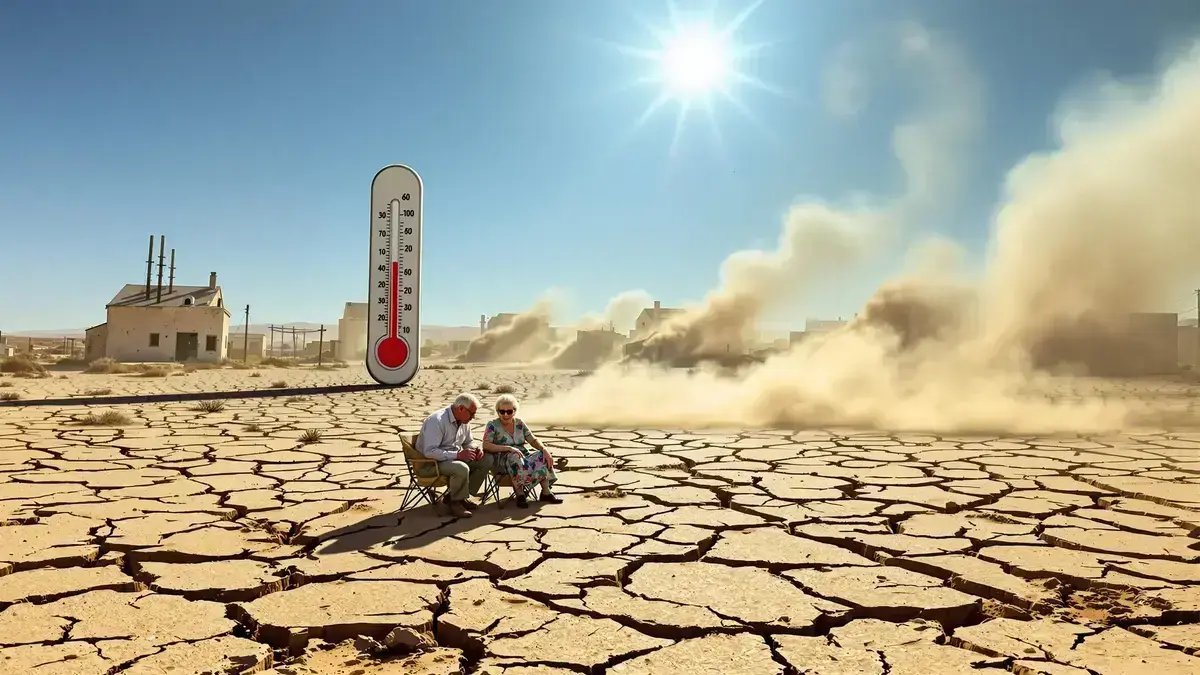A recent study published in Nature Reviews Earth and Environment reveals that the regions on the planet deemed too hot for humans could triple by the end of the century, while the average global temperature could rise by 1.5 °C compared to pre-industrial levels. An increase of just 0.5 °C could render land comparable in size to the United States uninhabitable, particularly impacting the population aged over 60.
Key Information
- Increase of 1.5 °C in average global temperature by the end of the century.
- An alarming threefold increase in uninhabitable regions with a rise of 0.5 °C.
- Significant effects on those aged over 60, with 35% of land becoming uninhabitable.
- Urgent need for a transition to renewable energy to mitigate risks.
Regions That Are Too Hot for Humans Will Triple by the End of the Century
Scientists are sounding the alarm about rising global temperatures, with troubling forecasts regarding the viability of land for human habitation. According to recent research published in Nature Reviews Earth and Environment, the regions on the planet classified as too hot for humans could triple by the end of the century, transforming populated areas into inhospitable zones.
A Rising Average Global Temperature
Currently, the average global temperature has already increased by +1.5 °C compared to pre-industrial levels. Climate models suggest that an increase of +0.5 °C on this average temperature could triple the uninhabitable land, an area equivalent to that of the United States. This phenomenon poses a significant threat, particularly to vulnerable populations.
Impact on the Elderly
The consequences of this temperature rise are most pronounced for the elderly. For individuals over 60, it is estimated that 35% of the land would become uninhabitable, making daily life increasingly dangerous as temperatures continue to soar. The heat may become a determinant, reducing their ability to move and access necessary care.
Extreme High Temperatures and the Implications
Critical temperatures such as a threshold of 42 °C are already being observed, defined as “unbearable” heat. At levels of +4 °C, approximately 40% of the land would become too hot for adults, presenting a severe public health crisis. This “non-compensable” heat affects the human body’s ability to regulate its temperature, leading to episodes of heat-related illnesses and, in extreme cases, mortality.
Geologists Discover $5.7 Billion Iron Ore Deposit, a Historic Record
Extreme Heat Events Already Observed
Extreme heat events have already been observed in various hot regions around the world. These episodes are already showing disastrous effects on public health, agriculture, and surrounding ecosystems. Continued greenhouse gas emissions not only compromise current quality of life but also jeopardize the future of humanity globally.
The Necessity of an Energy Transition
To mitigate these increasing risks, transitioning to renewable energy is essential. Reducing greenhouse gas emissions is crucial to limiting temperature rises and preventing catastrophic scenarios. Moreover, ensuring reliable access to cool environments becomes a matter of survival for vulnerable populations, especially during peak heat periods.
Conclusion About Future Challenges
The challenges posed by climate change are alarming and require immediate action from governments, international organizations, and society as a whole. Ongoing research and recommendations from scientists must form the foundation for developing effective climate policies that protect future generations from the devastating impacts of extreme weather conditions.

